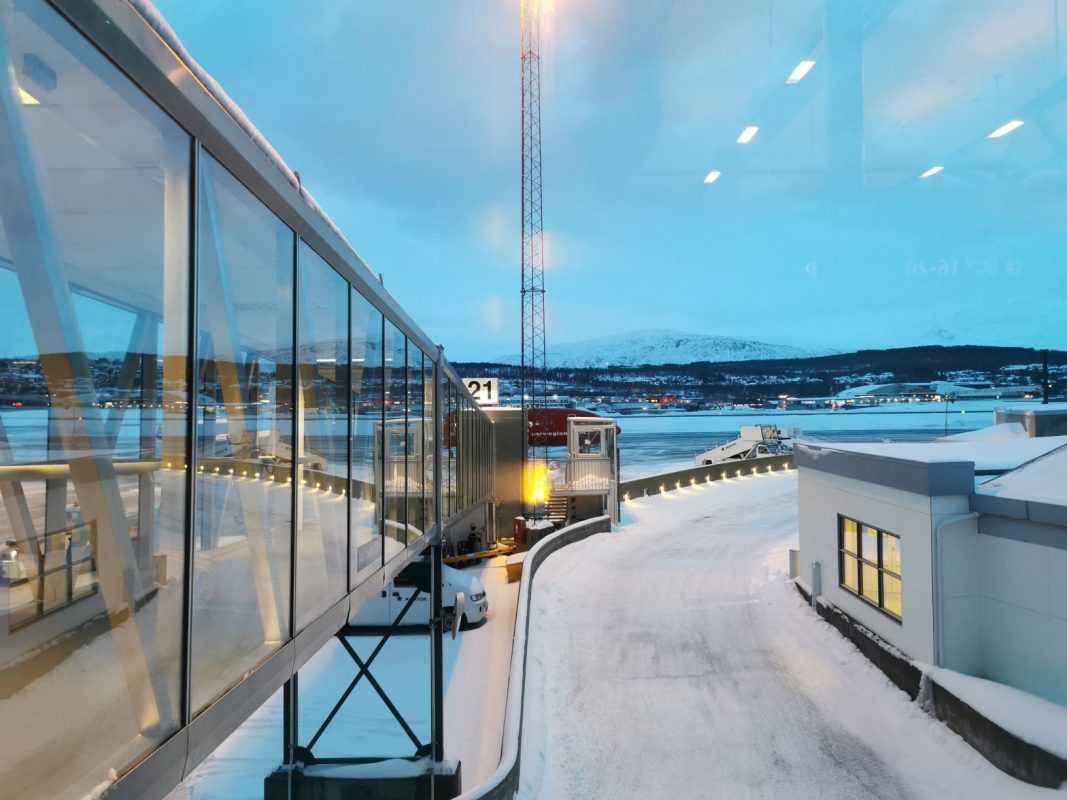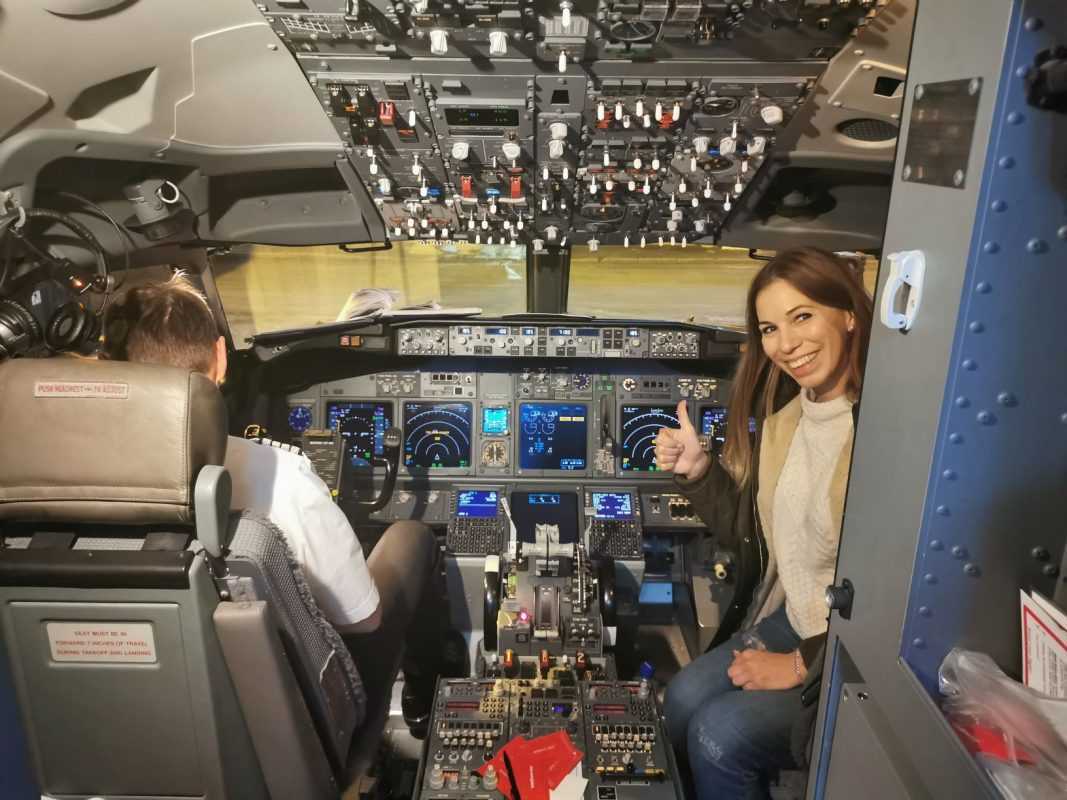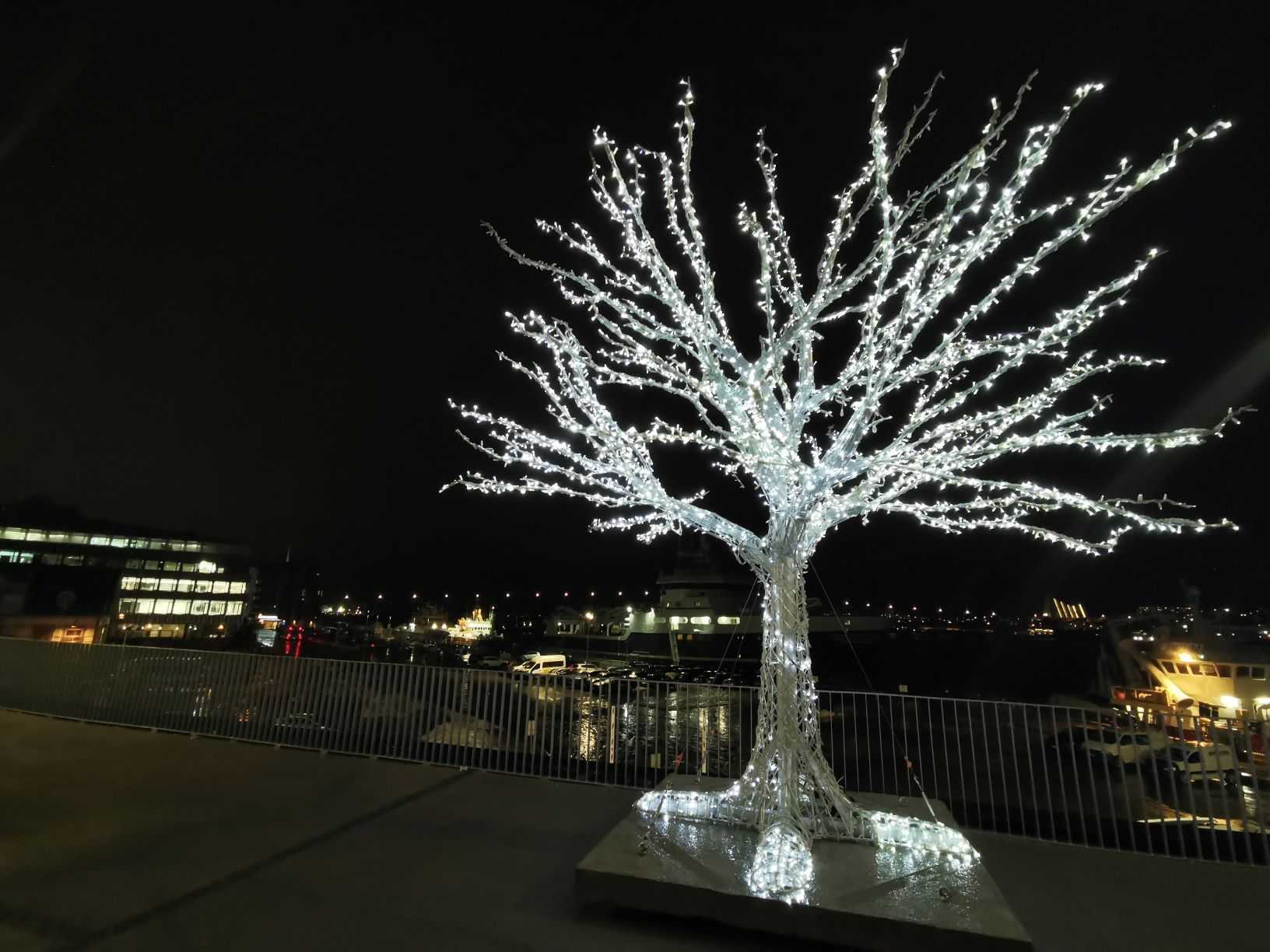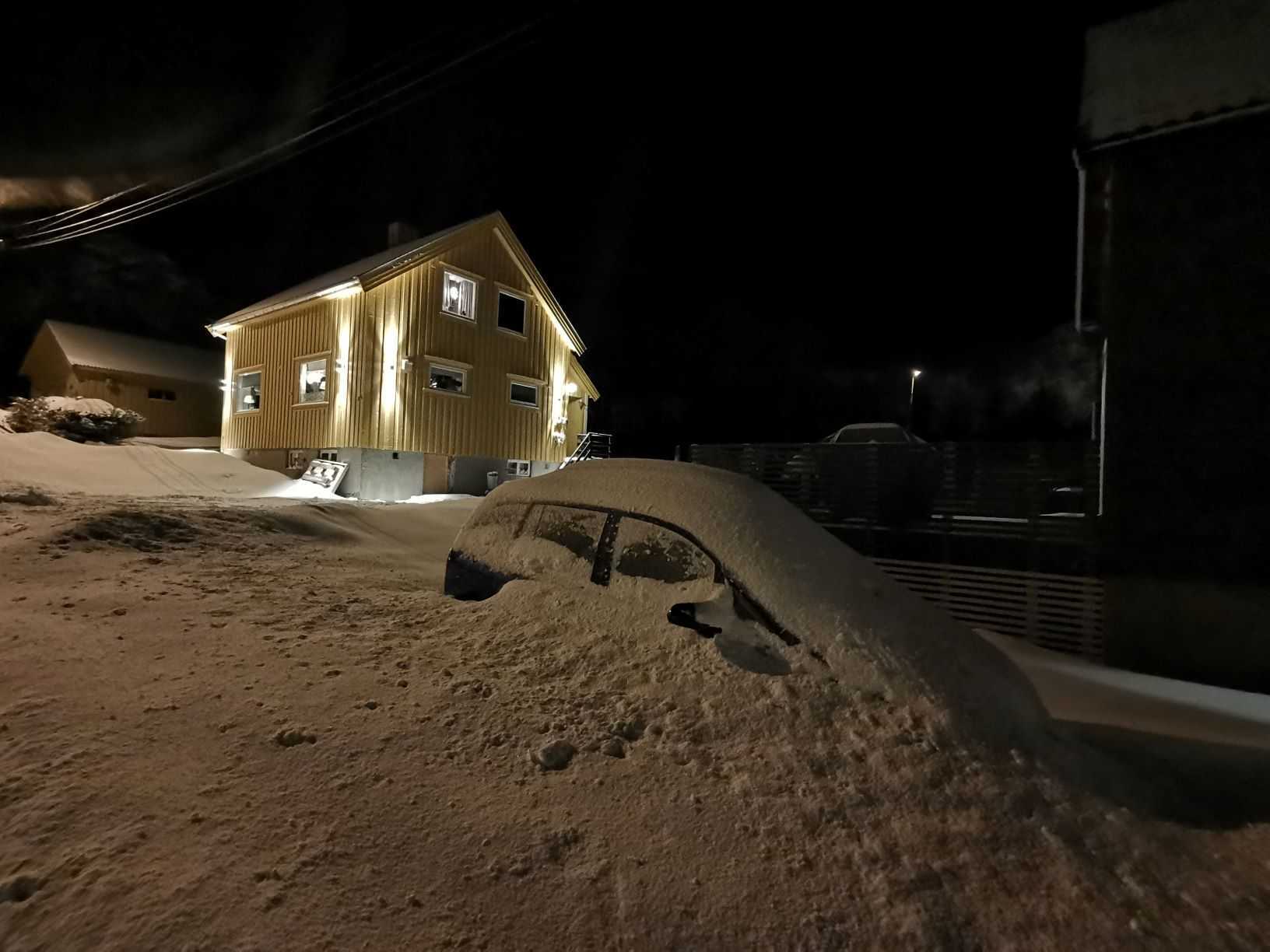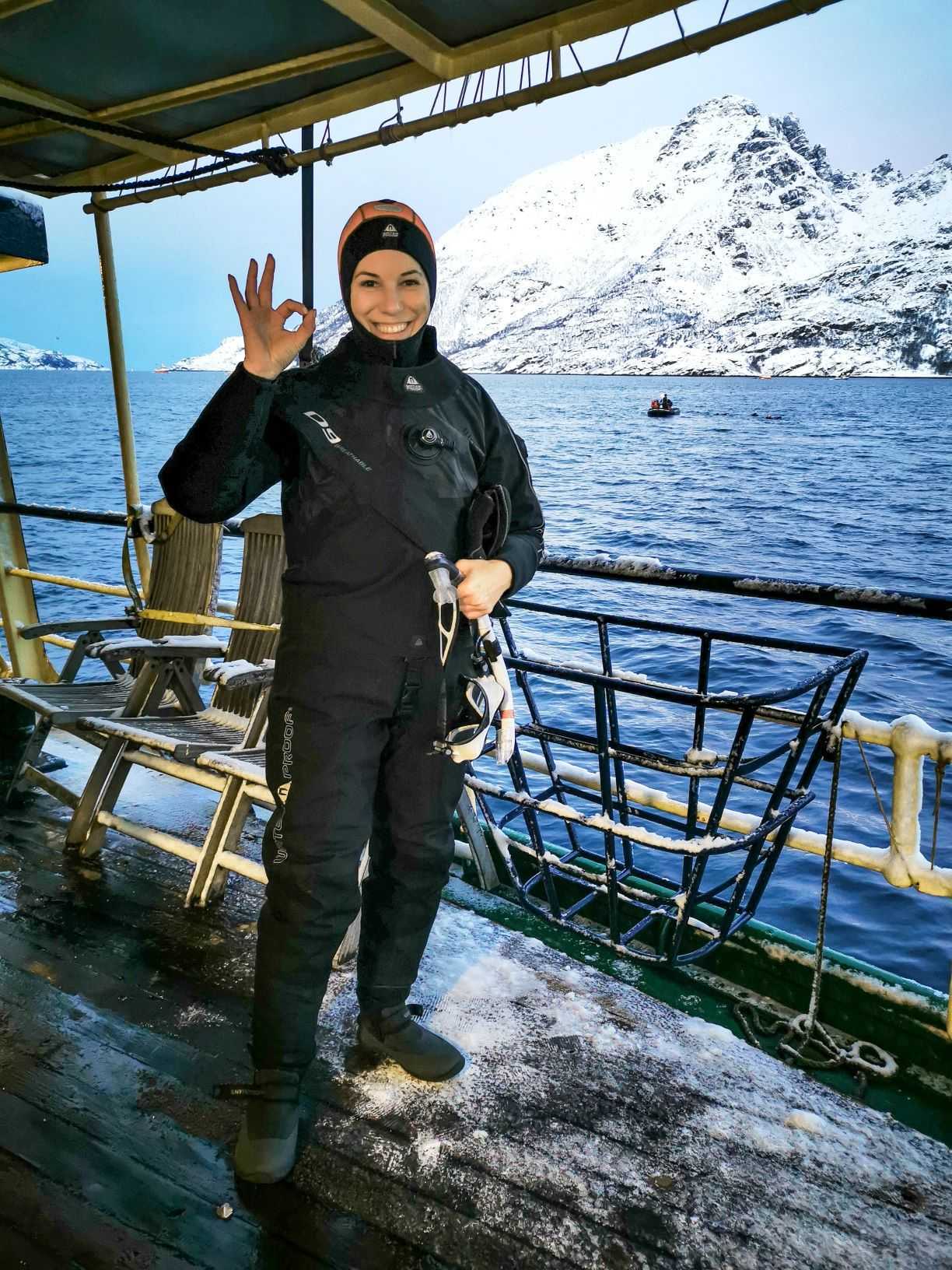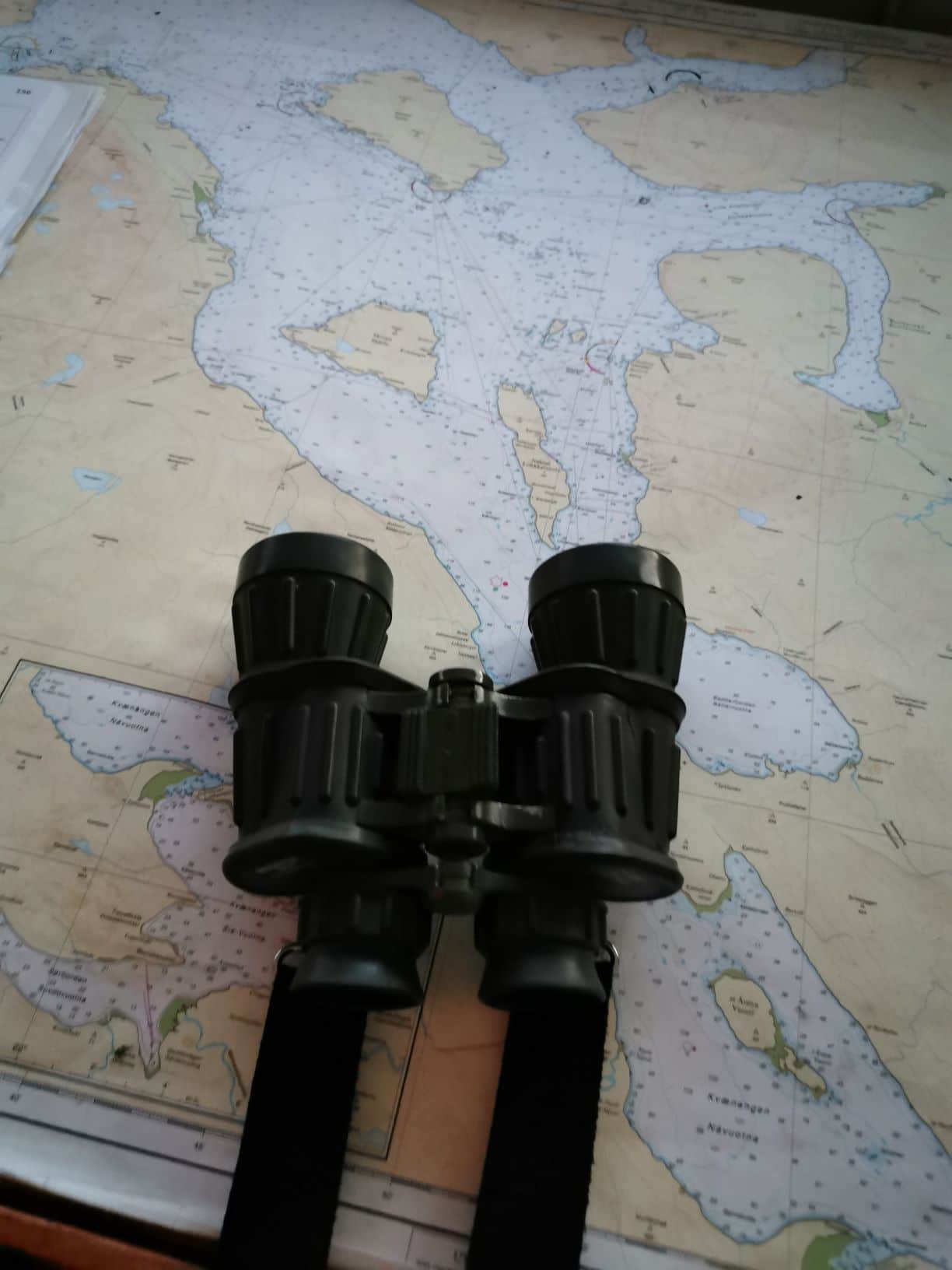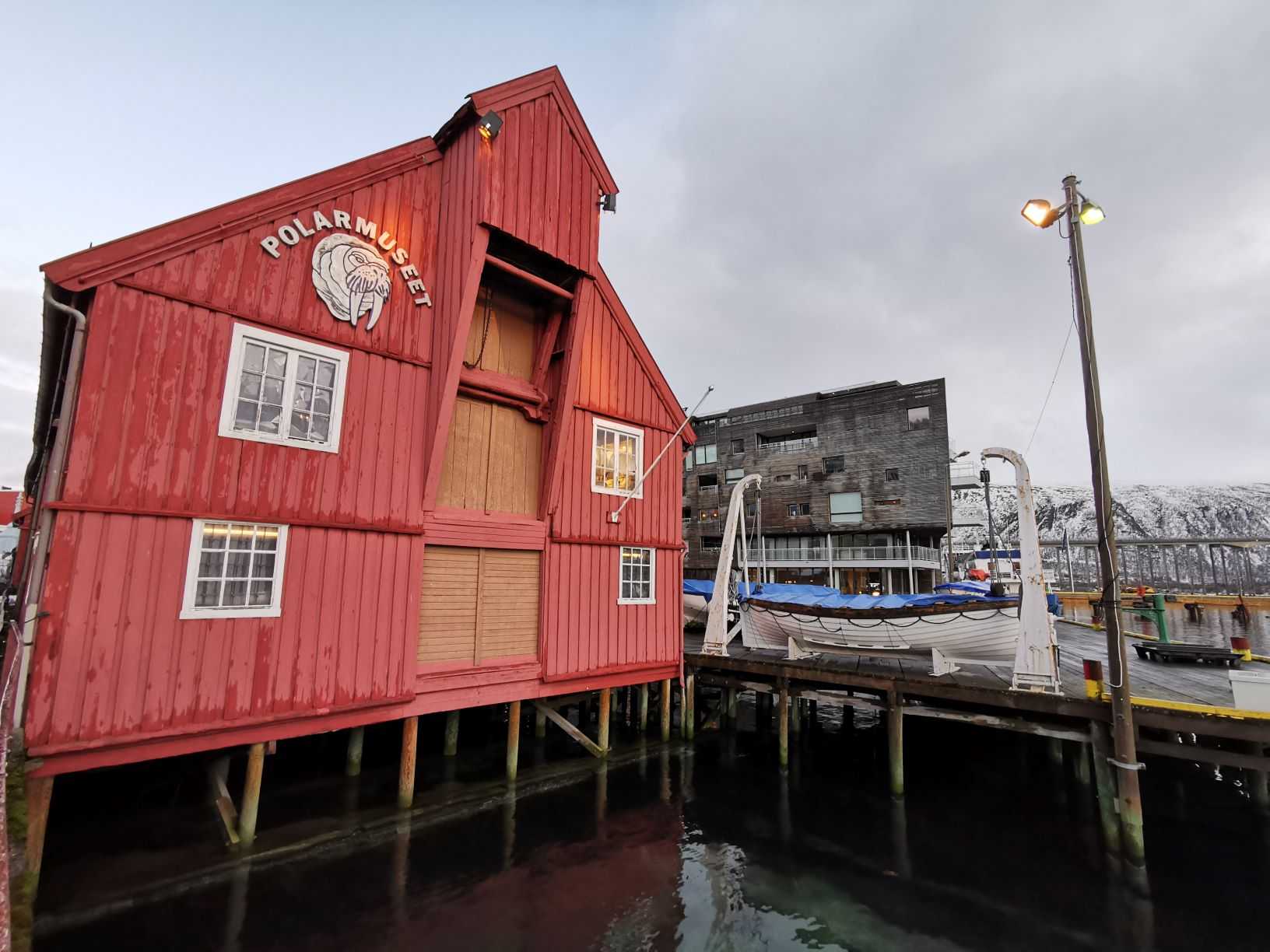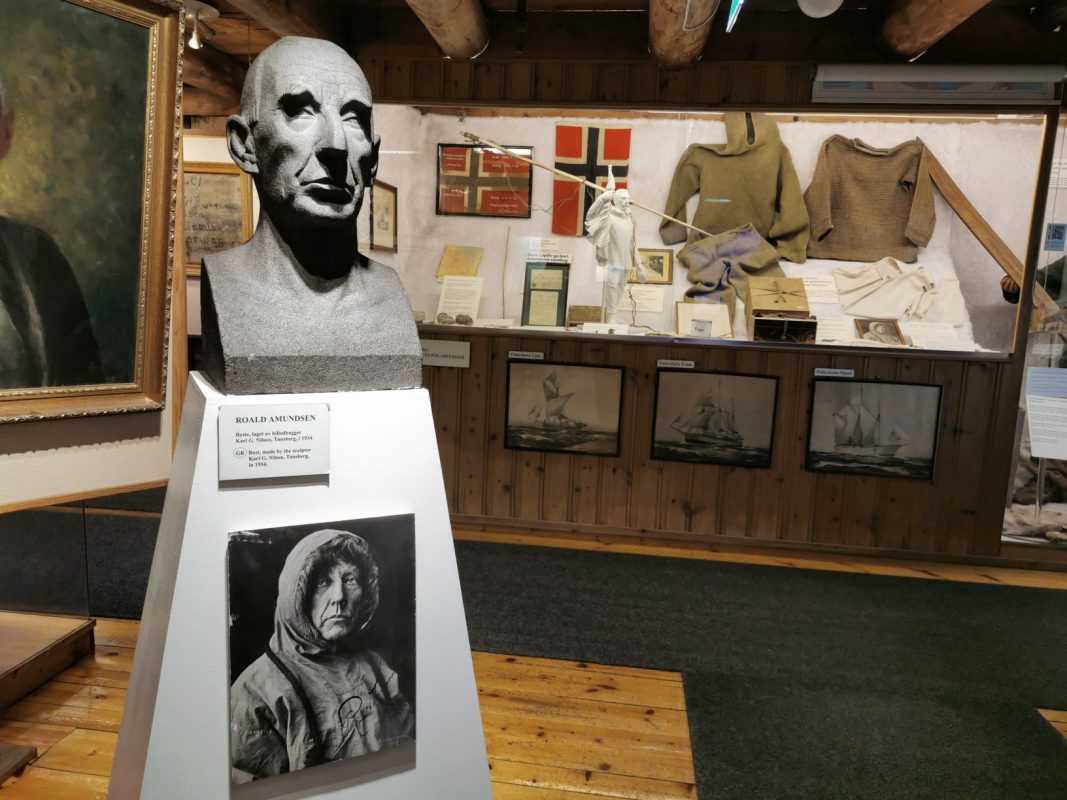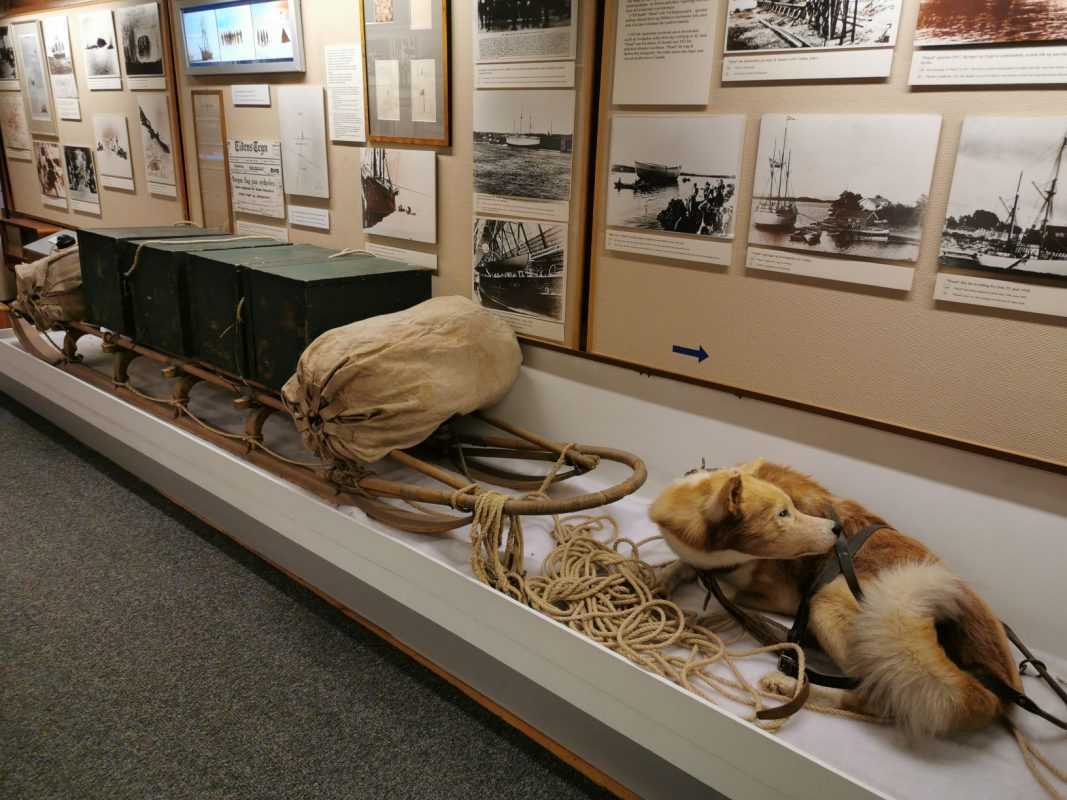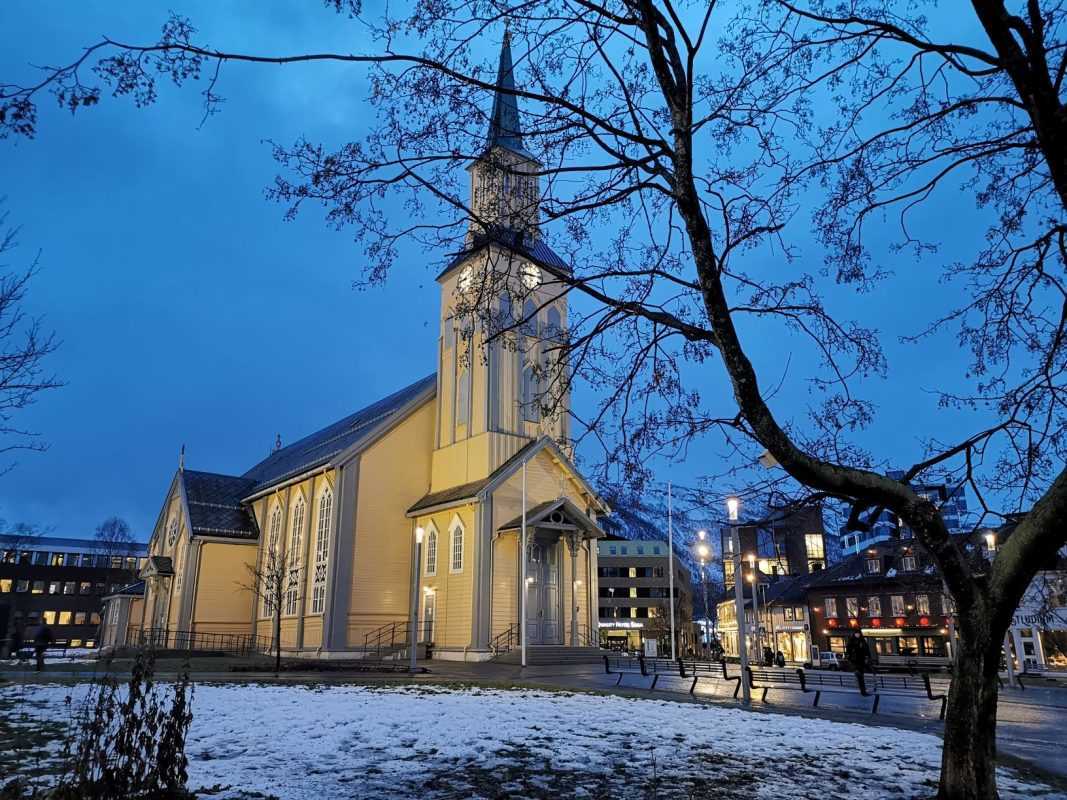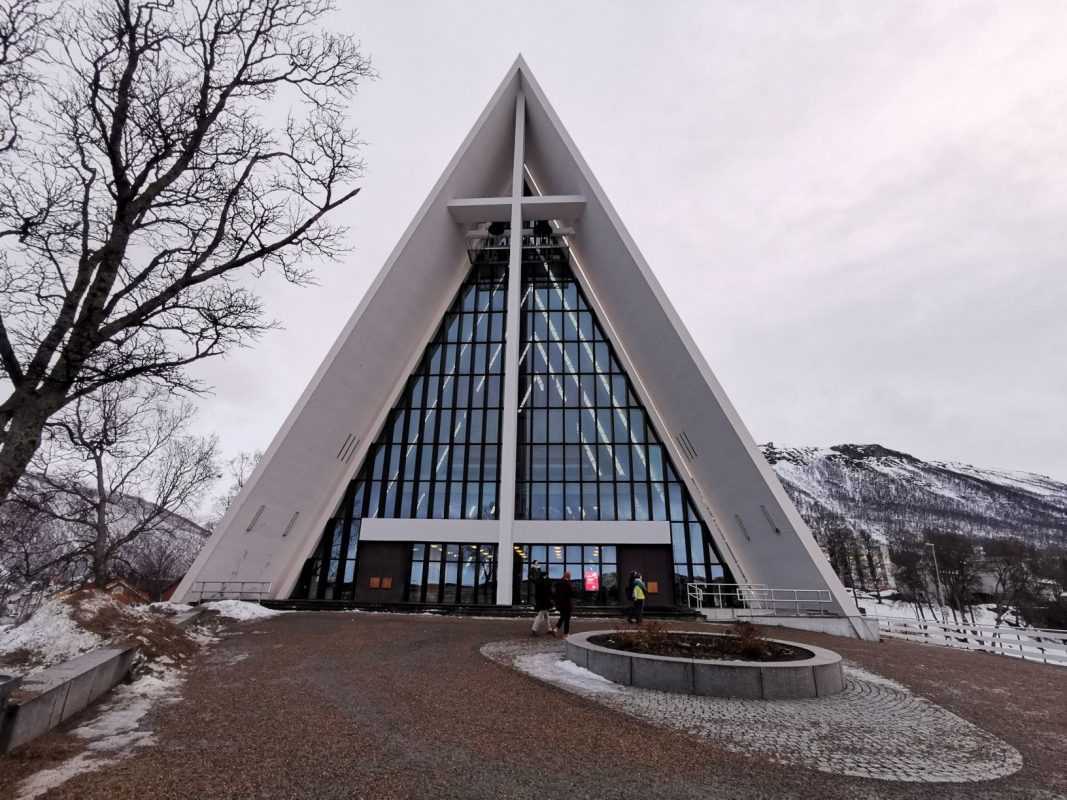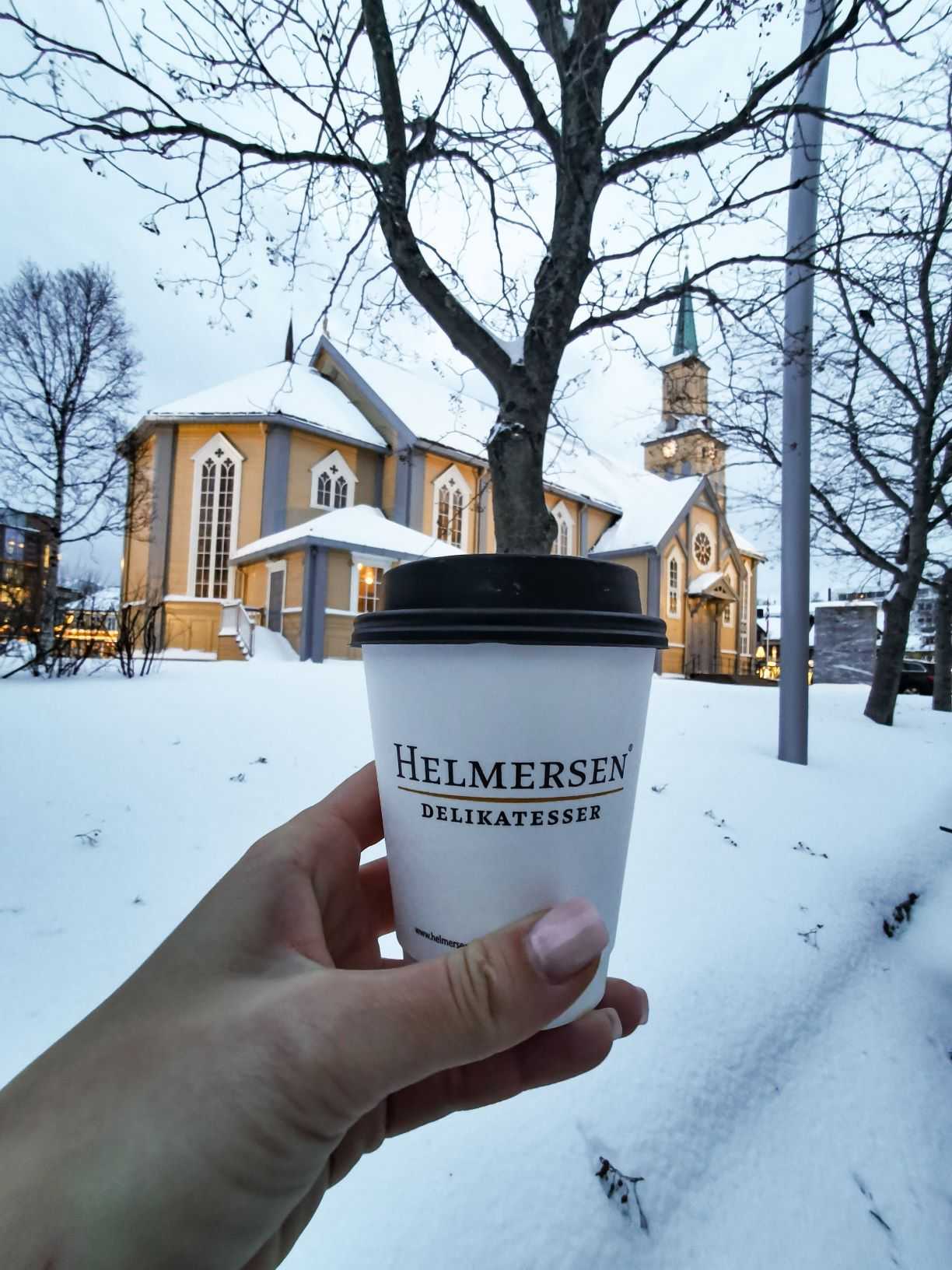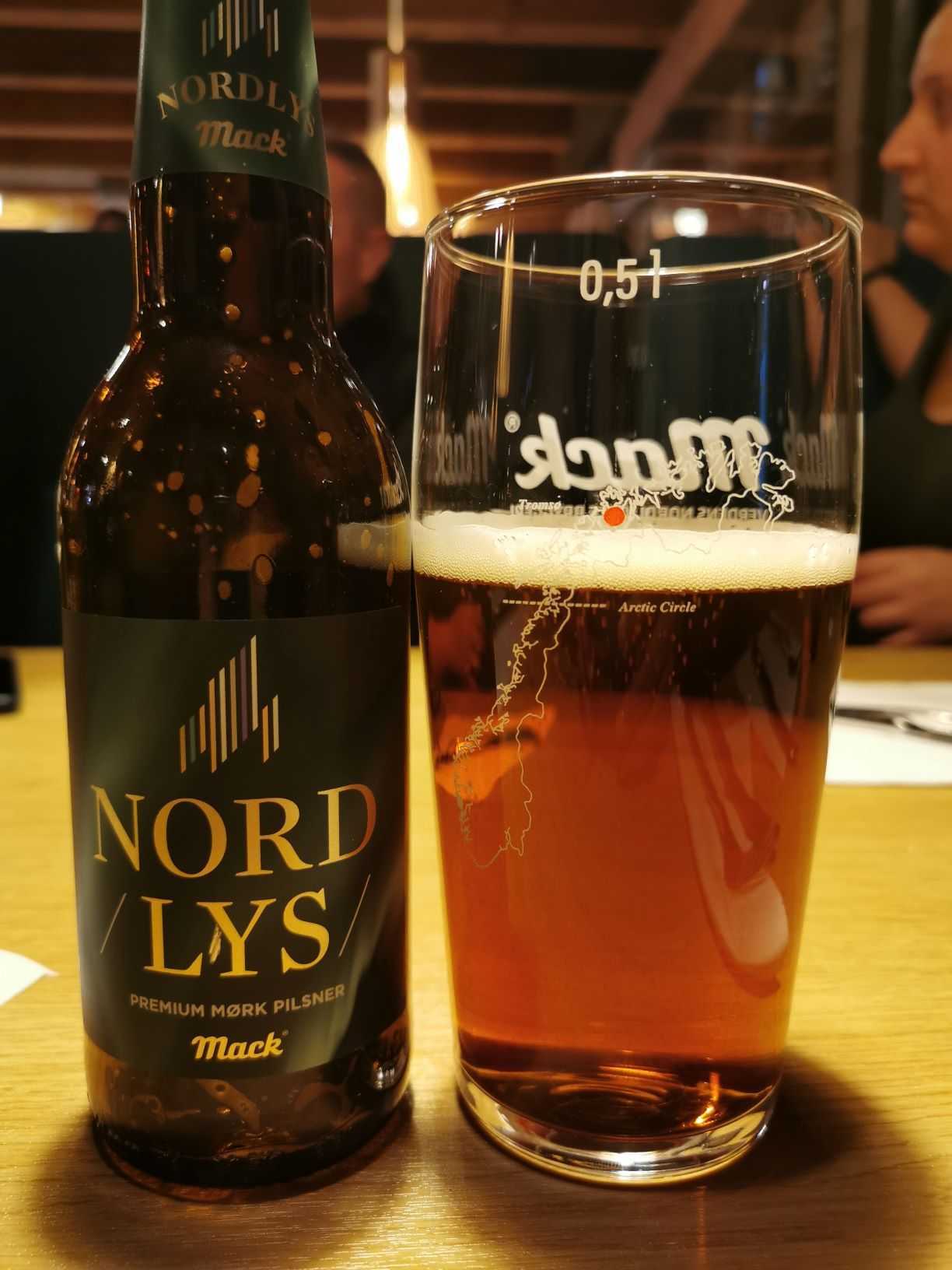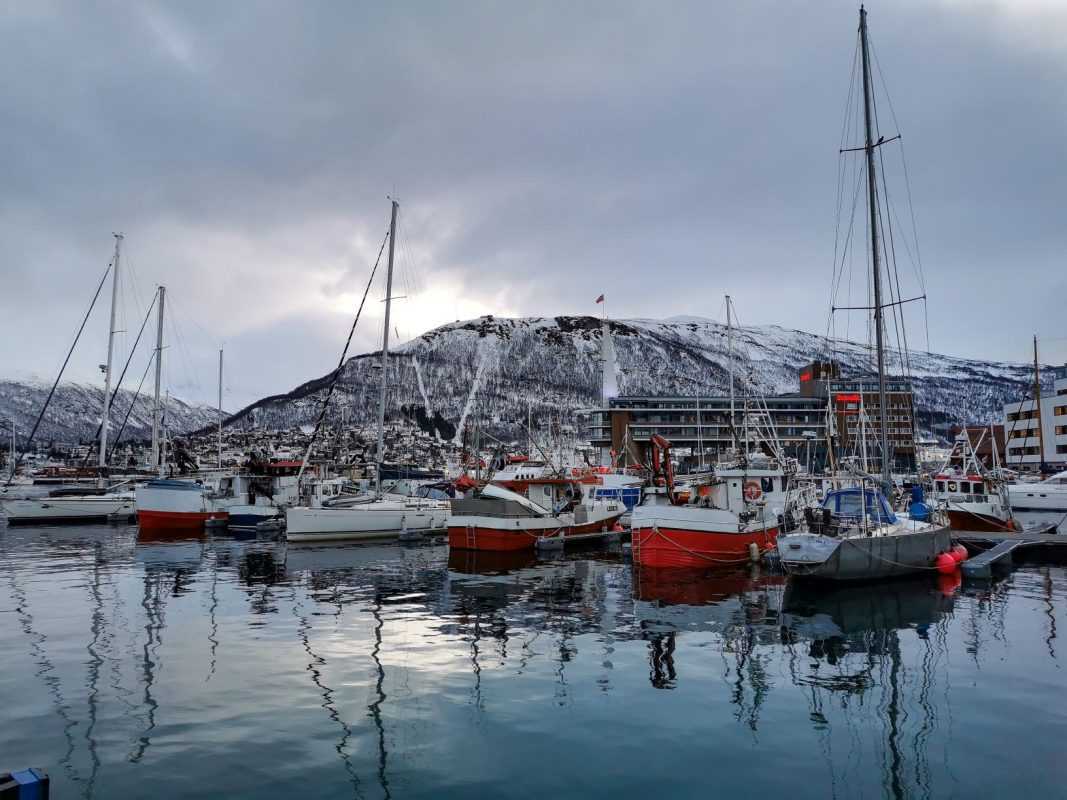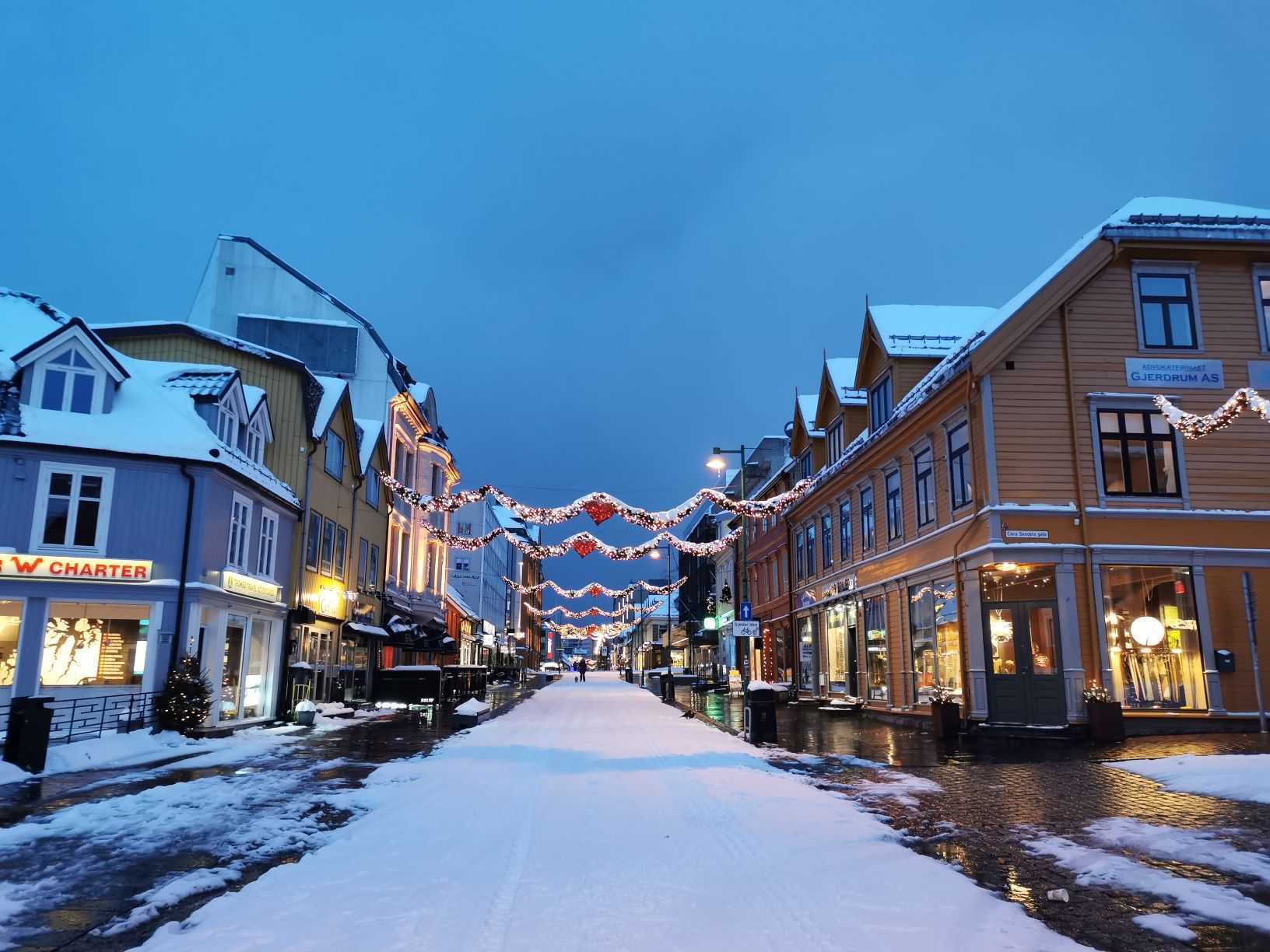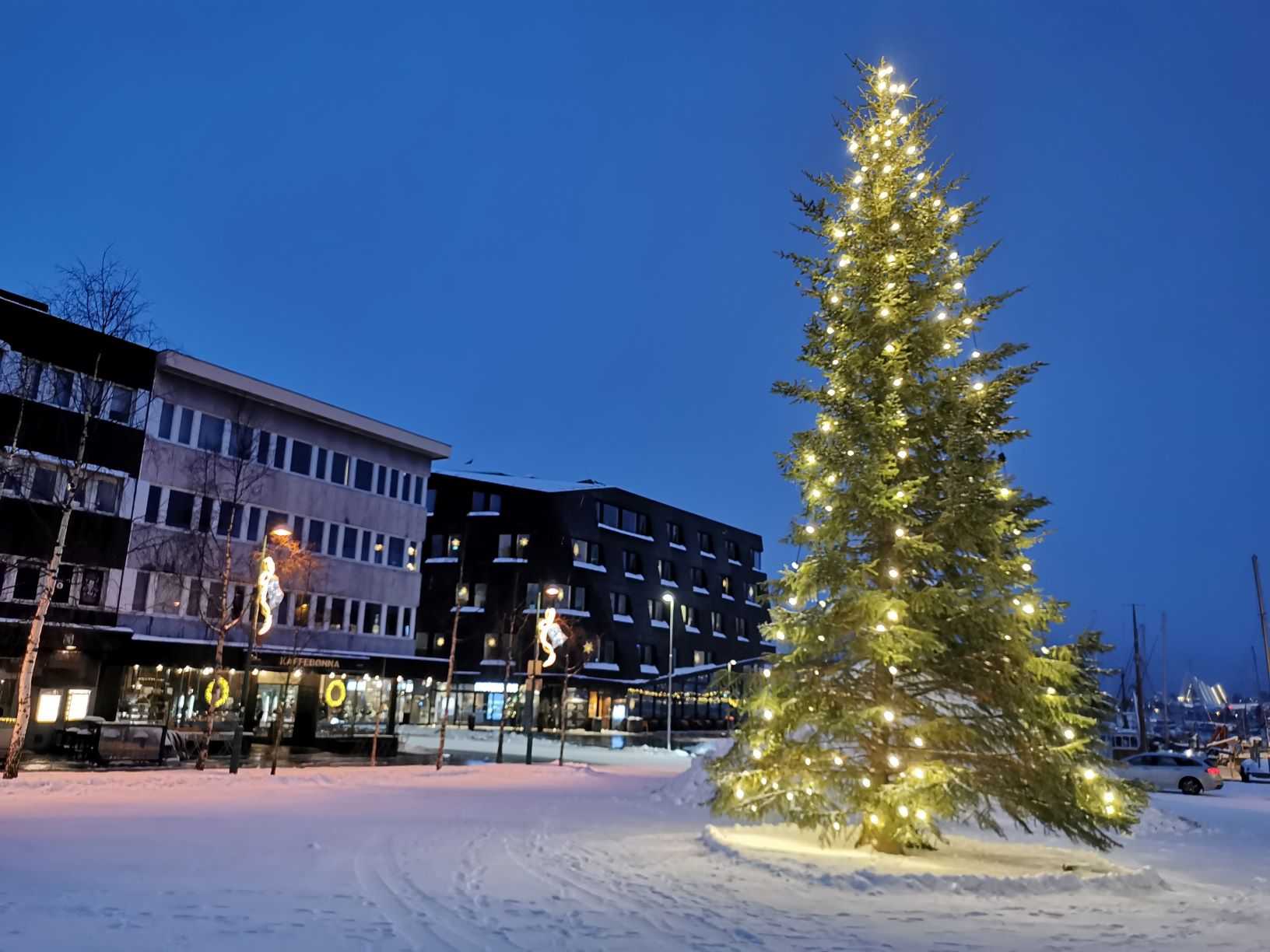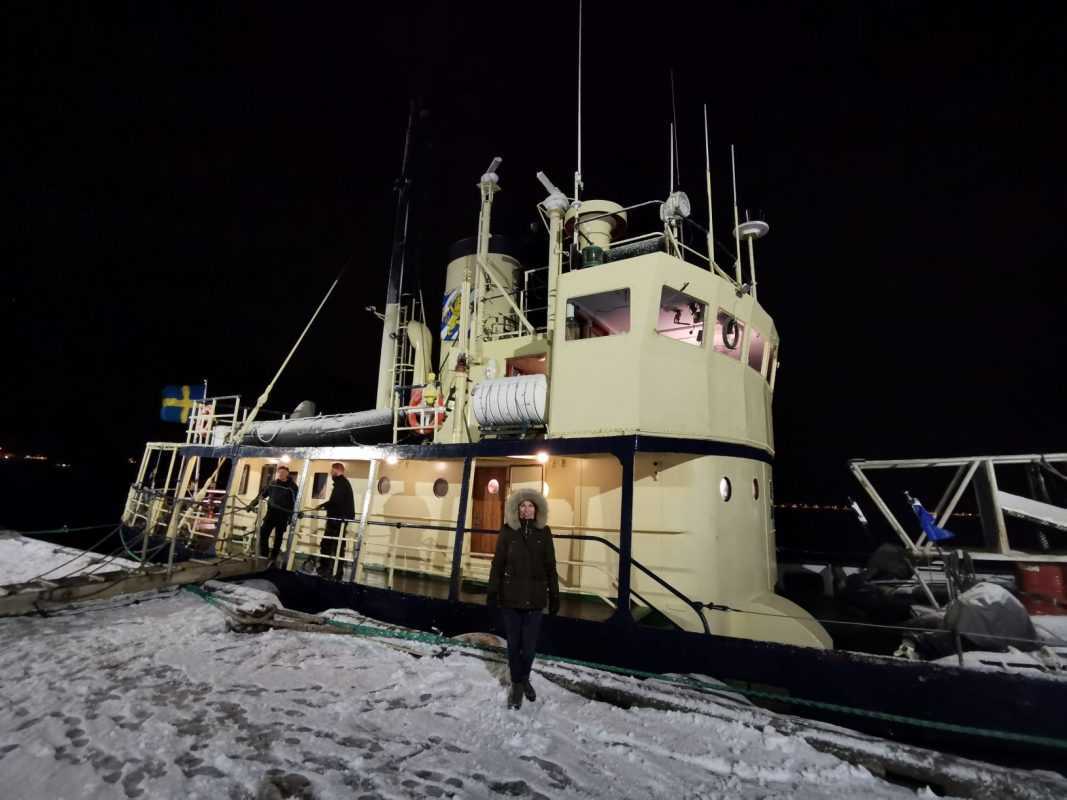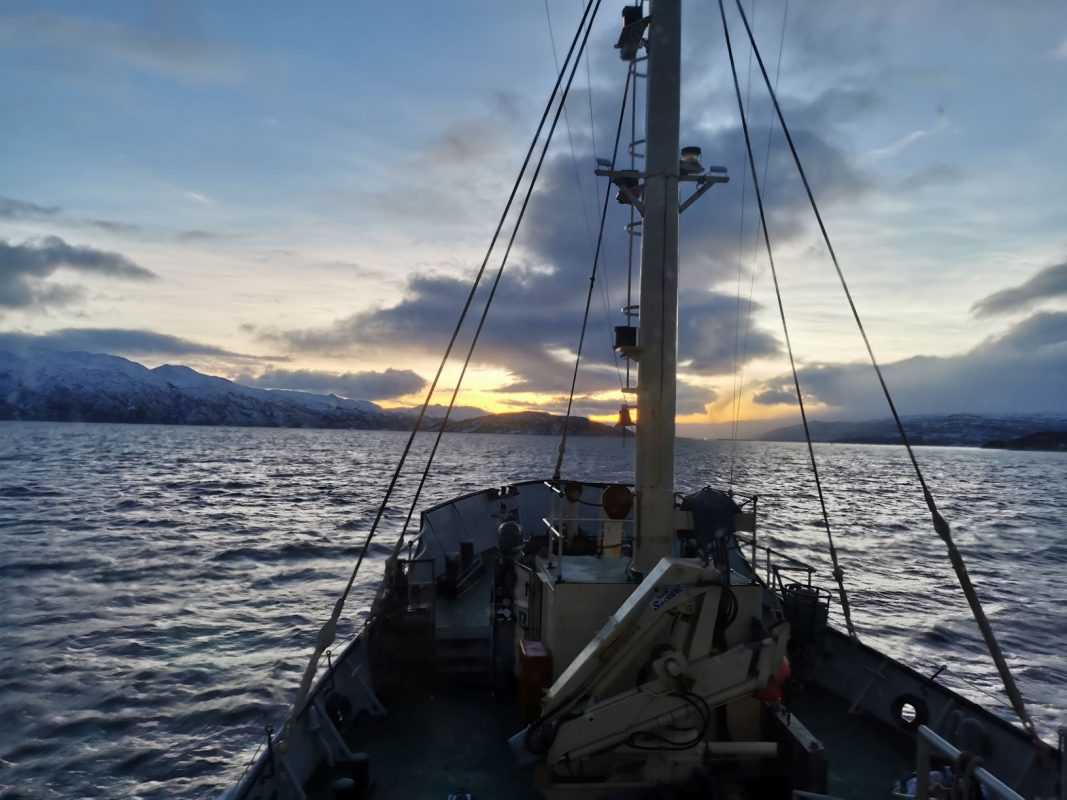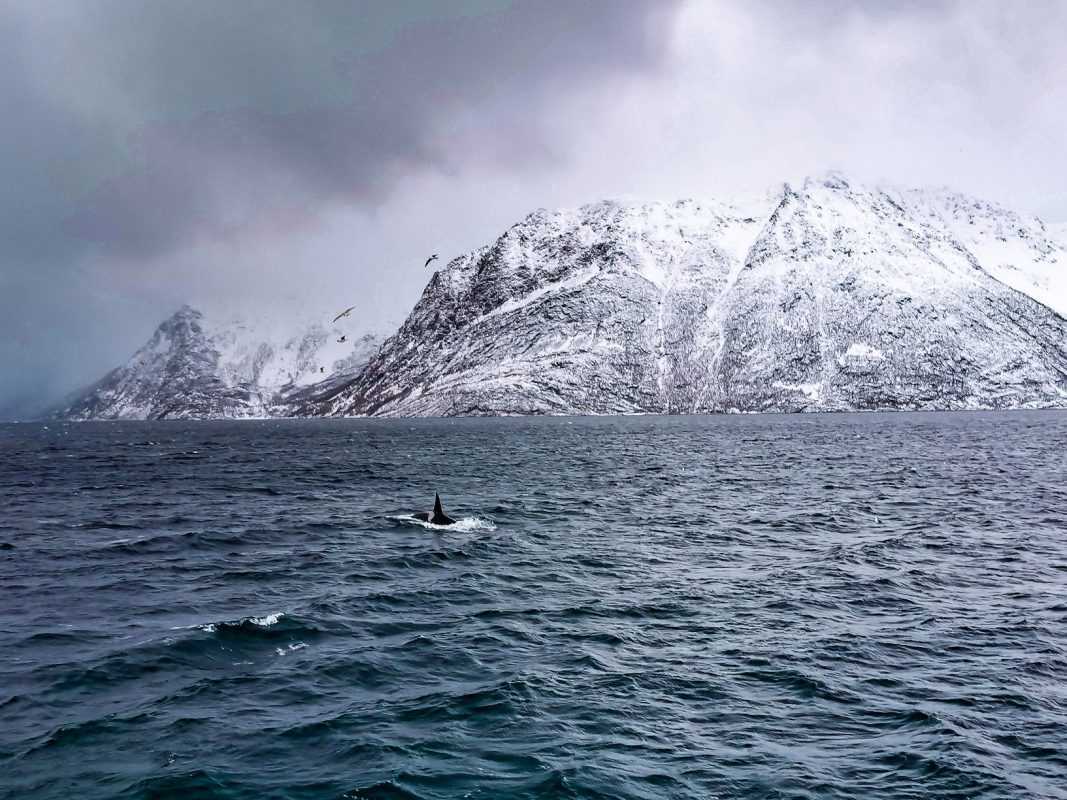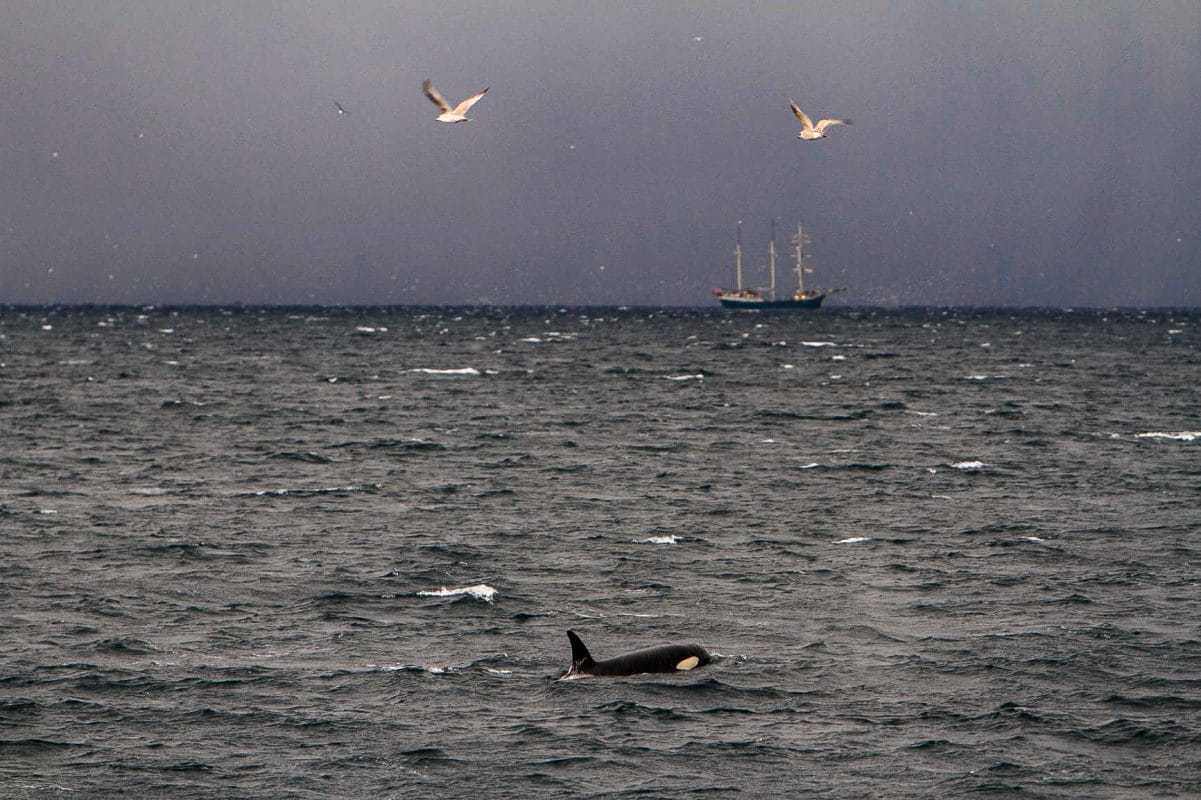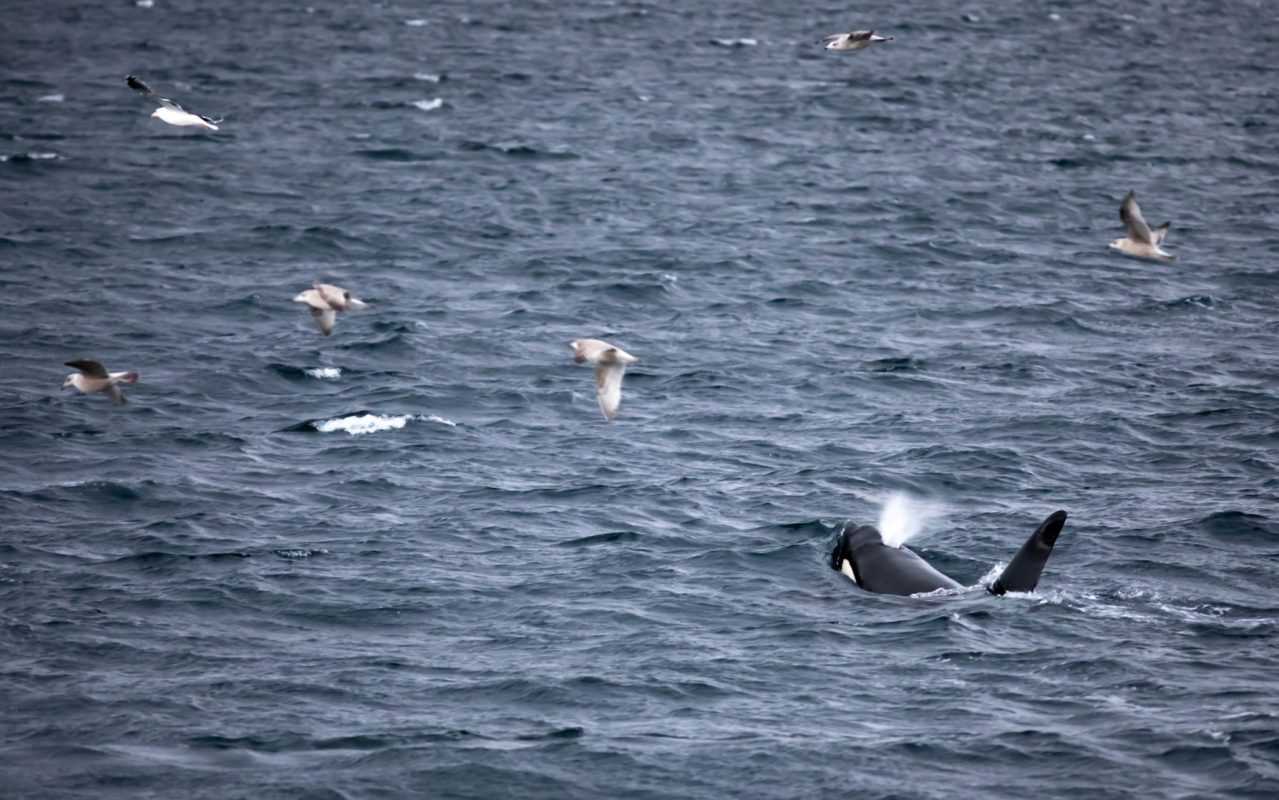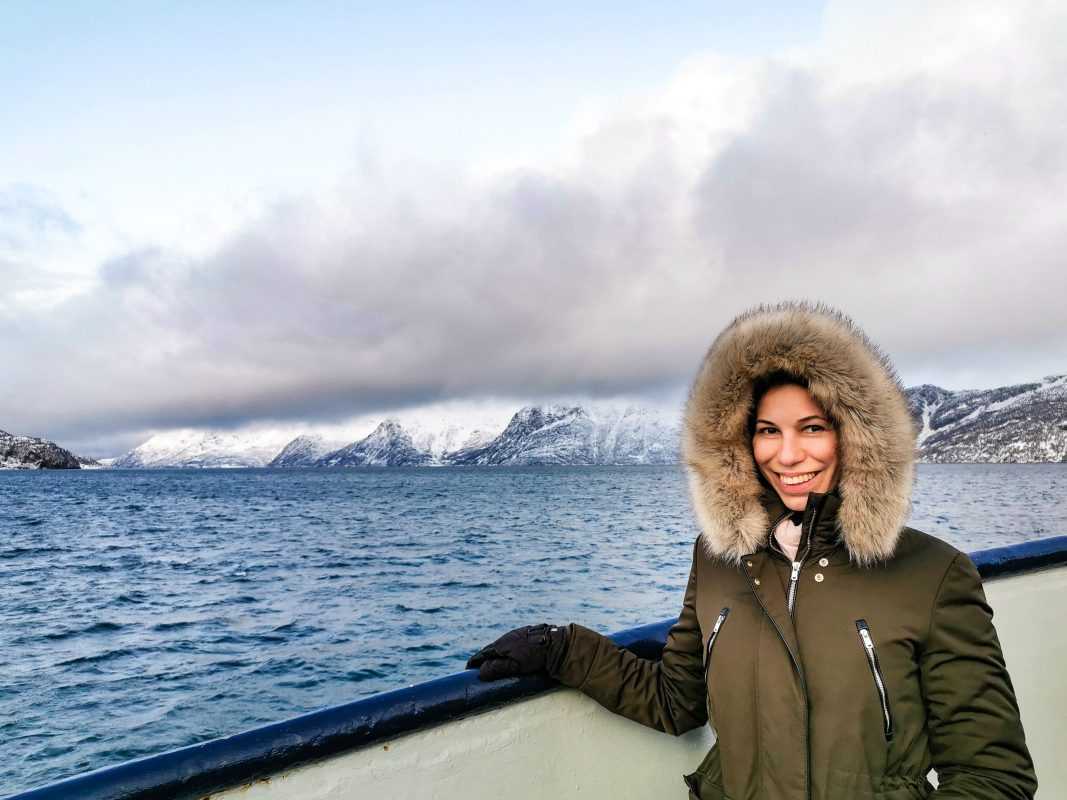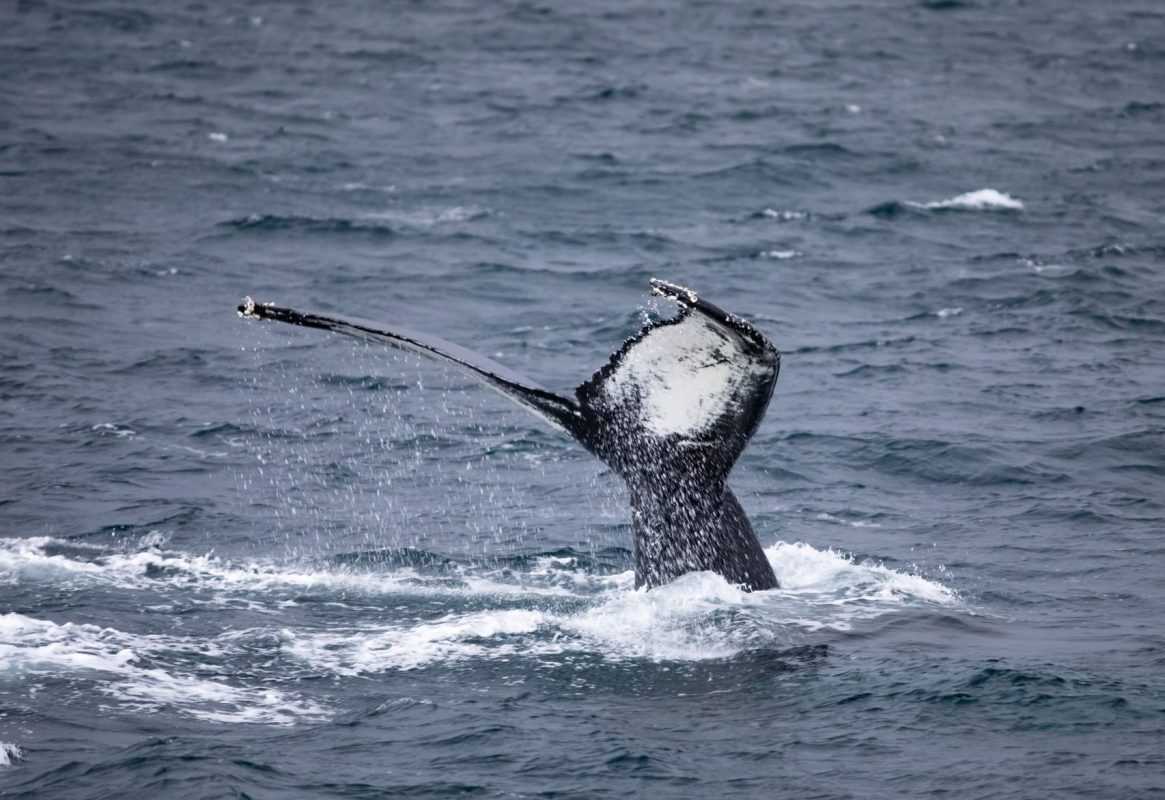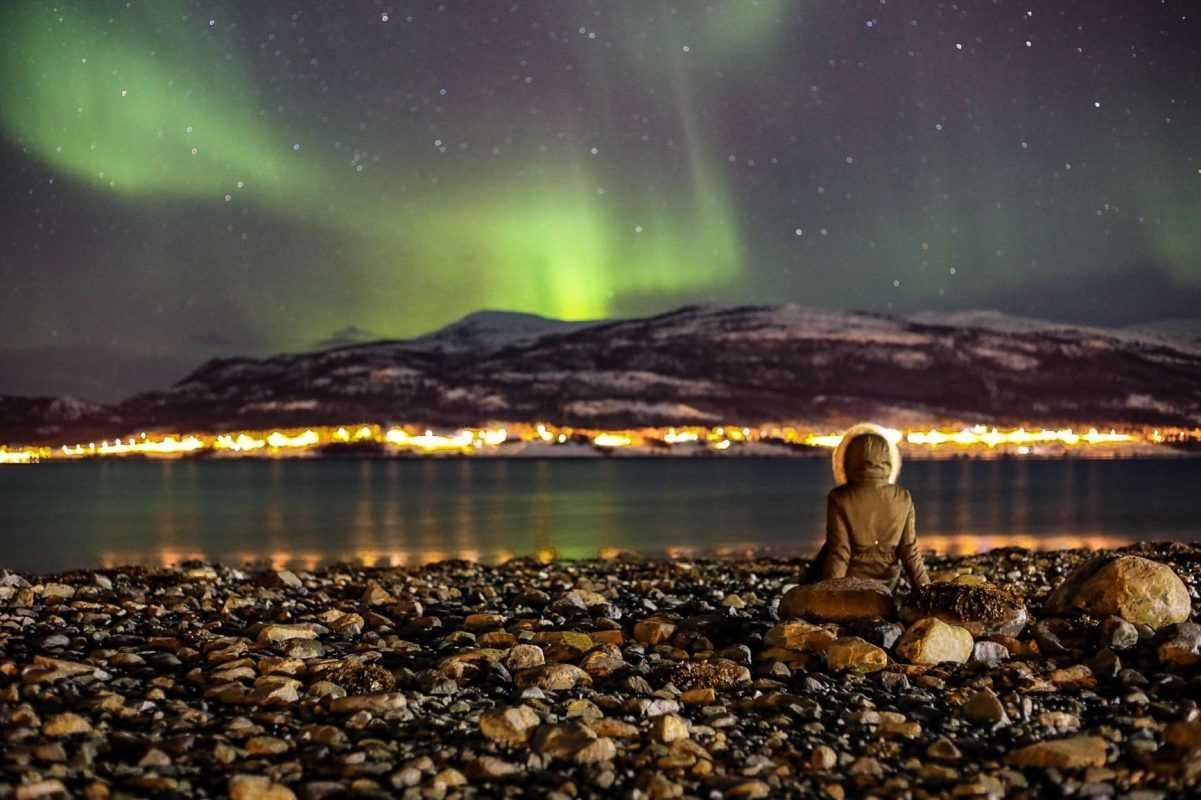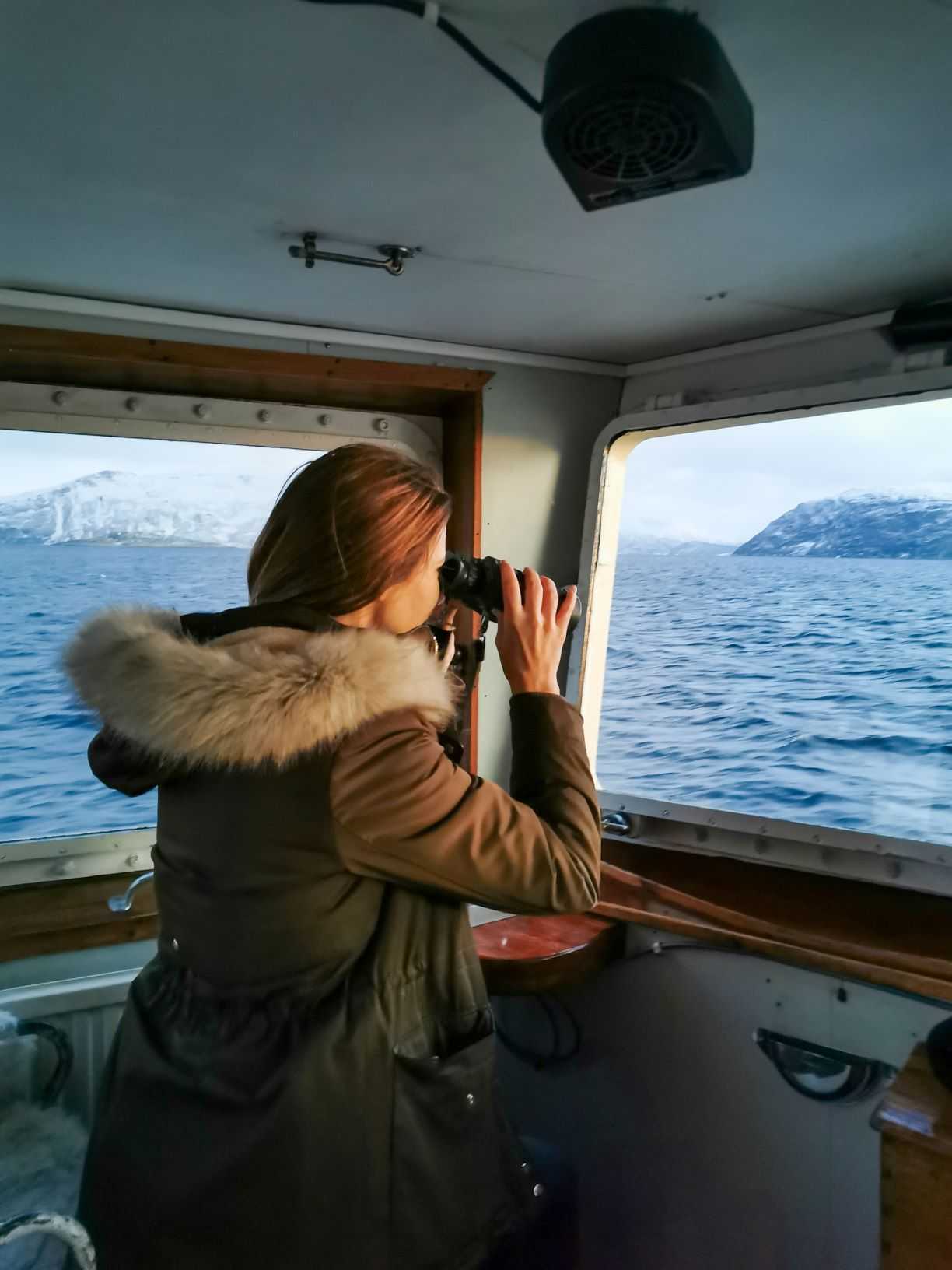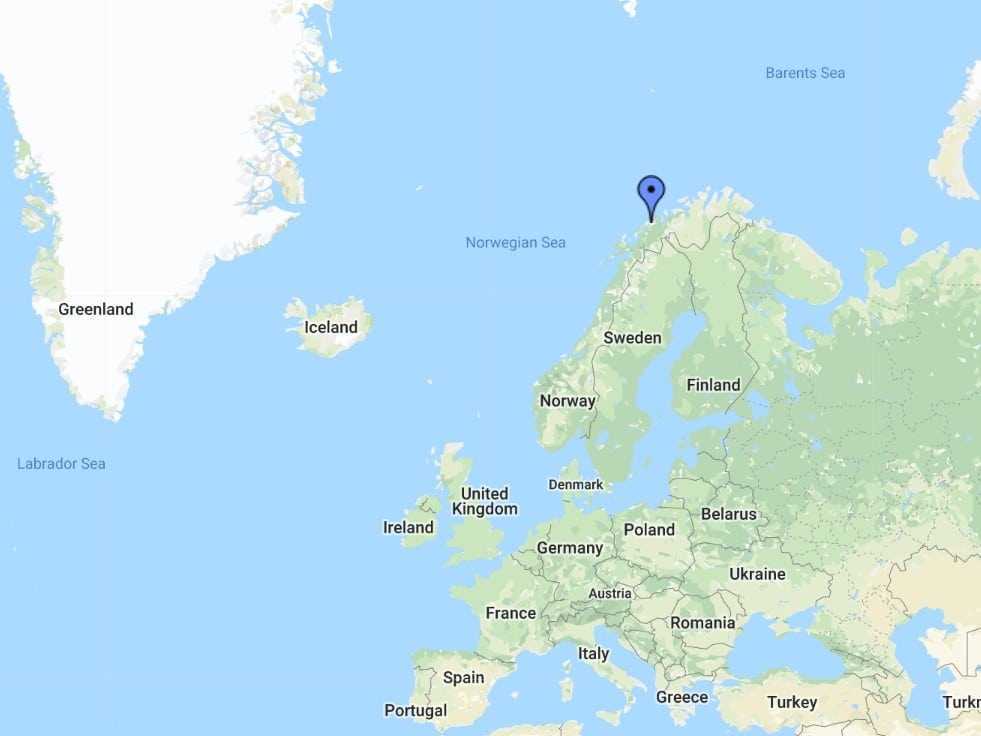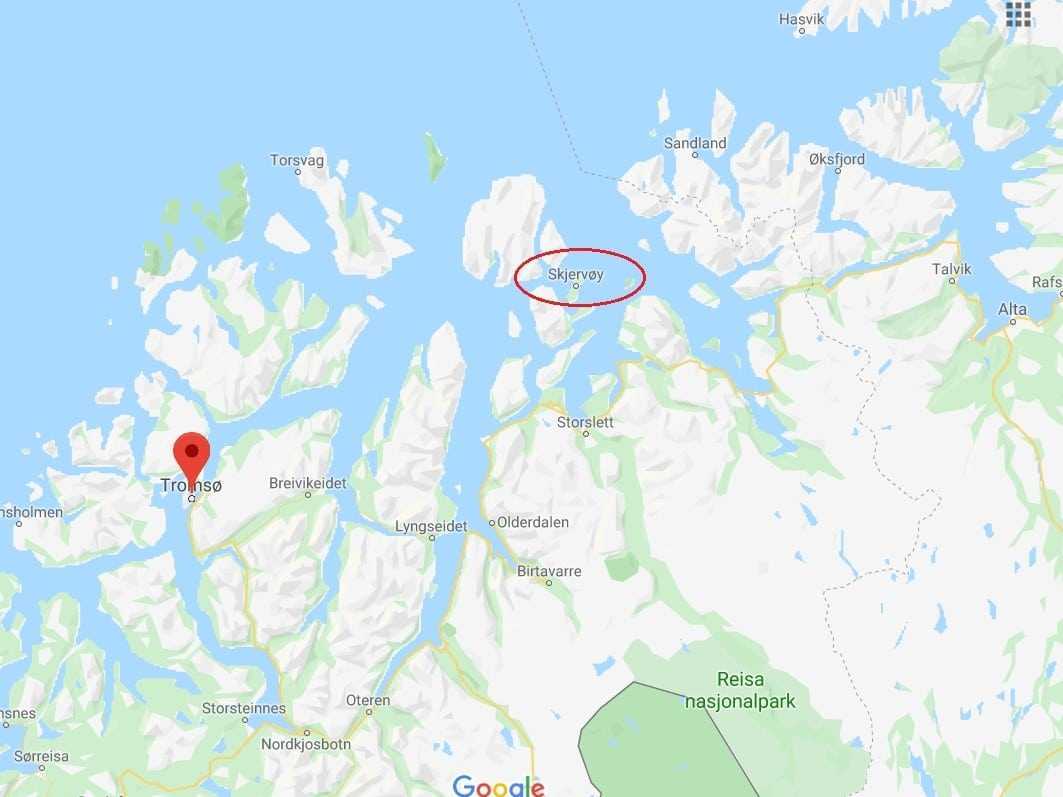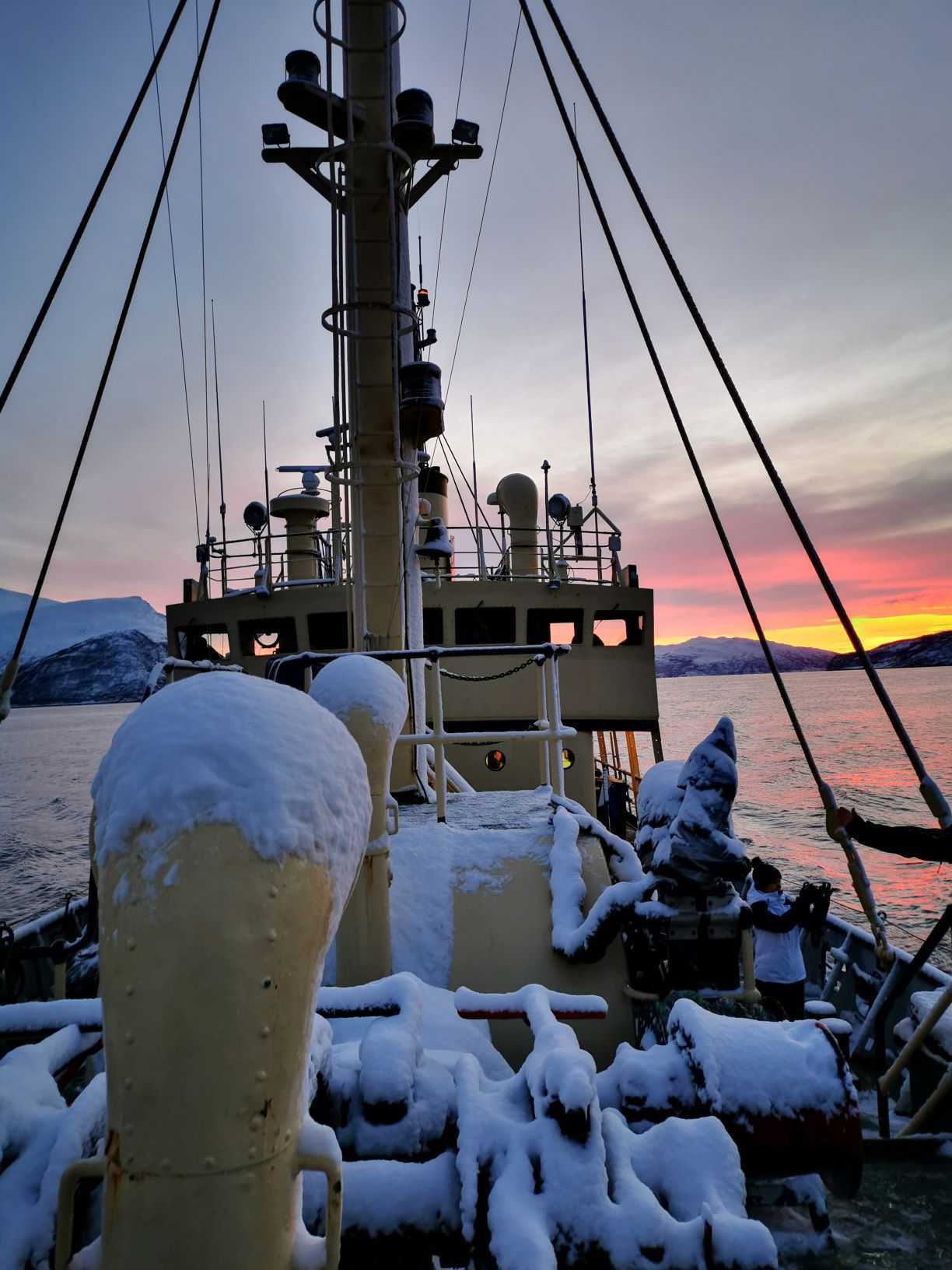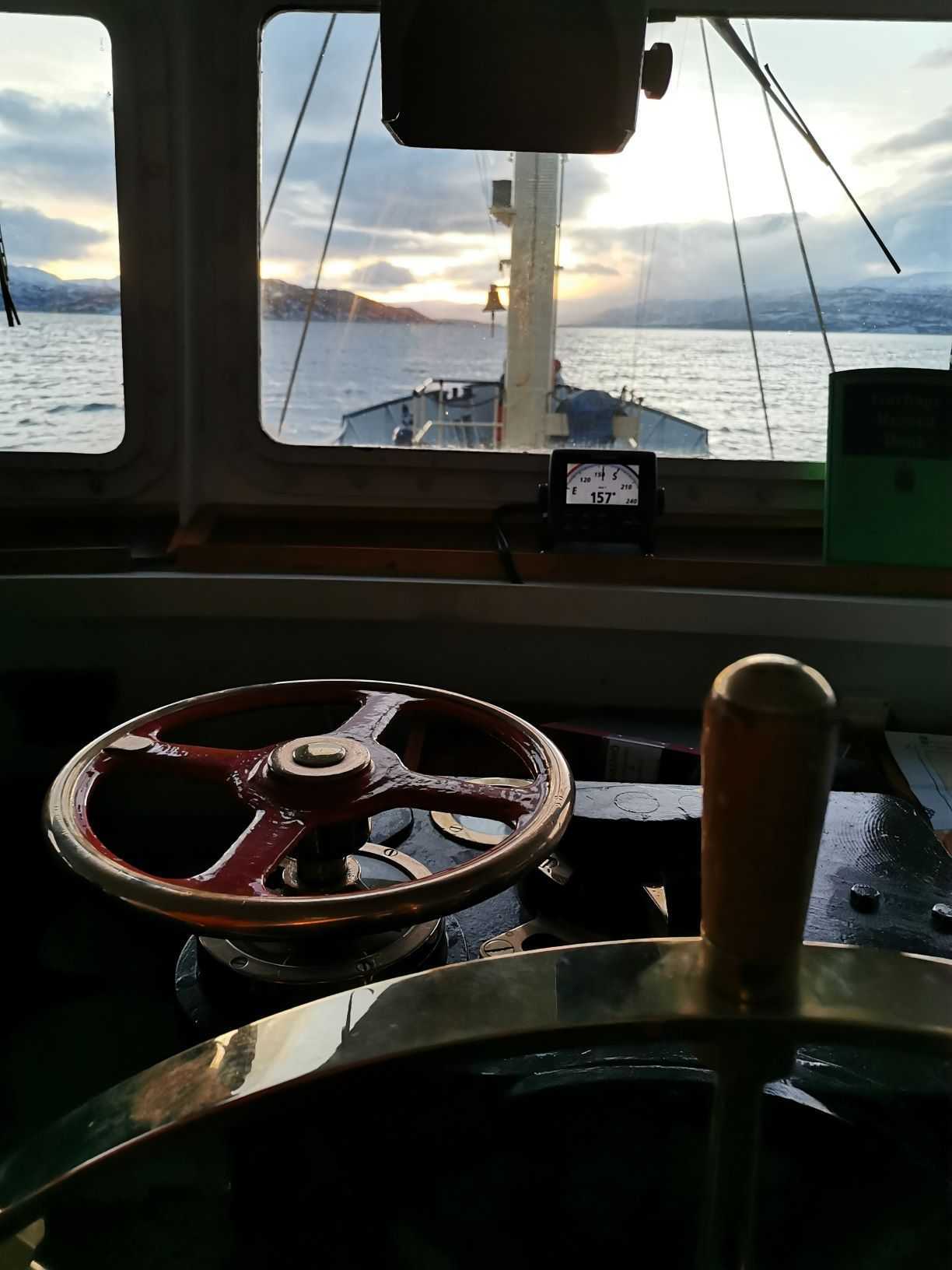If I say that I’ve had a dream that’s been accomplished during my last trip, I’m not exaggerating much. Traveling beyond the Arctic Circle, meeting free-living orcas (killer whales) and humpback whales, swimming with them, sailing among the Norwegian fjords in winter, becoming part of nature’s wonderland, I think it’s on many people’s bucket list. After nearly a year of waiting and saving I went on the arctic adventures, which needed a lot of planning. I share in my blog post all you need to know about traveling to the Arctic Circle.
Traveling there
In order to see orcas, aurora borealis, Norwegian fjords, it is necessary to travel quite north. To be exact, 400 km beyond the Arctic Circle, to Tromsø, to Norway’s 8th most inhabited city. I flew with Norwegian from Budapest to Oslo and then to Tromsø. Although Wizzair may be a good option for Oslo too, but if there are flight delays and cancellations due to snowfall and you have reservations by different companies, they are not obliged to transfer you to another flight, this is worth bearing in mind. For us in Tromsø, the airport was closed for 2 hours due to the blizzard, so you should not count on too short connection times. Although airports in Norway are endlessly professional in handling winter weather conditions, but if you stuck somewhere and need to buy a new ticket, it will be quite expensive. As an additional cost, not to mention the price of food and drinks, but I will talk about that later.
Weather
Despite being beyond the Arctic Circle, the average winter temperature is “only” minus 4 degrees, thanks to the warming effect of the North Atlantic current. Between November 26 and January 15, the sun does not rise above the horizon and there is light only 3-4 hours a day. But it’s not a complete light like what we have during the day. The colors of sunset and dawn perfectly describe the light of the sky, which often produced quite magical moods without filters. When I was in Norway at the beginning of December, the weather in Tromsø was quite friendly, around -1 –0 degrees, but in the small fishing villages on the open water and in the fjords, we were greeted by darkness and minus 8 degrees.
Suggested clothing
We can’t talk about a real Arctic cold (the breath doesn’t freeze), but because of the cold wind, it’s worth taking more warm clothes. The most practical wear is a ski jacket with a hood, high-stemmed hiking boots, warm ski socks + normal socks, layered cotton tops, undercoats (including below) and waterproof trousers. And, of course, hats and gloves are a must-have. When you’re in the water for snorkeling then the dress is complemented by a jumpsuit and dry clothes. At the end of the 20-30-minute dress procedure, I felt like a snowman, but at least I didn’t freeze in the cold water of 5 degrees. That’s right, 5 degrees. My fingers were cold in the wet 7mm diving gloves, but orcas and humpback whales deserve all the effort to be seen, right? Before we go into the water, just a few words and thoughts about the city of Tromsø.
Tromsø and Norway
The city is known for its many adjectives, such as the Borealis capital of the aurora, the Northern Paris, or the center of the Arctic world. The latter includes Canada, Denmark, Faroe Islands and Greenland, Finland, Norway, Iceland, Russia, the USA (Alaska) and Sweden. Tromsø has been a populated area since the last Ice Age, although the crowding of people here is a strong exaggeration. According to the 1794 census, it was inhabited by only 80 people, but today there are nearly 100,000 people living here. If you are interested in life beyond the Arctic Circle, you should visit the pink building in the harbor, which is the home of the Polar Museum. Richly furnished exhibition halls await you and you can get an insight into the lives of the people living here through everyday tools and stuffed animals (whale hunting is still legal in Norway).
The famous Norwegian explorer Roald Amundsen received a special section at the museum, who was the first to hit the South Pole in 1911. While his rival, Scott, set out on the expedition with the cold-tolerant dwarf ponies, Amundsen took the farthest point on the planet with a dog sedan, and he was the winner of the race. Amundsen was the first to fly over the Arctic Circle in 1926, but two years later his blimp crashed over Tromsø and his body was never found. The entrance to the museum is NOK 70 and you can spend easily 1.5 -2 hours there.
Honestly, Tromsø didn’t really impress me. It’s not your typical Norwegian city, at least the cityscape is not charming. The city has two churches, one of which is located on the shopping street Storgata and was built in 1861. The other is the Arctic Cathedral, which can be found on all fridge magnets with aurora above the mountains around it. The triangular cathedral is not in the city center of Tromsø (which, by the way, stands on a separate island), but has to be cross bridged. If you don’t want to walk 1.5 km, get on a local bus that takes you everywhere (including the airport) for 50 NOK. The bus ride is an extra ride as you travel through underground roundabouts and tunnels.
We spent an evening in a hotel in Tromsø and although we didn’t have time to see and take a cable car to the northernmost brewery in the world, I don’t feel like I missed anything. At least my wallet thanks this. Let’s just say I never regret the spend money for experiences, and I never will, but you should be prepared that Norway is an expensive country. Without the need for completeness, a list of what cost (1 NOK= 0,091 €)
- 1 coffee: 39 NOK
- 1 bottle of beer (0.33 l): NOK 89
- 1 dl wine: NOK 110
- 1 bottle of wine (0.7l): from NOK 1300
- 1 piece of pastry: 39 NOK
- 1 x 20 cm pizza: NOK 160
- 1 main course (fish&chips or chicken): NOK 180-230
In fact, city life is not the main attraction of Tromsø, and we didn’t come here to eat and drink all day. But to discover the natural beauties: the wildlife of the cold seas, the snowy fjords and, of course, the Northern Lights, the aurora borealis. If you would like to add dog or snowmobile activities to the list, it is also possible to do so in the vicinity of Tromsø. Now that we’ve made it this far in the blog post, I’m guessing everyone’s sitting on pins and needles waiting for me to get to the headline, too, referring to orcas and Northern Light. So I’m not going to waste any more time getting on a boat to see the wonders of the world beyond the Arctic Circle alternated between darkness and light at sea for five days.
Sailing in the Norwegian Sea
After leaving the port of Tromsø on a Swedish(!) built boat, called Malmö ( it was built actually in 1943) I couldn’t wait to sail out into the fjords and finally meet the orcas and humpback whales on our way to Skjervøy. The encounter was also a special experience because Norway is the only place in the world where one is allowed to enter the water between orcas (also known as killer whales). Although direct attacks on humans have only been reported, let’s not forget that the cute outfit covers a highly intelligent and predatory mammal. Orcas have a population of 50,000 in the world and occur in many parts of the world. In addition to the conditions of the habitat, their dietary habits are influenced by patterns within the family, a bond that lasts for the rest of their lives.
While at the coasts of Canada or Greenland seals and great white sharks! are considered the main prey of the orcas, in the Norwegian fjords they feed on herring. Although we are talking about an animal of one species, orca families in different parts of the world have socialized differently: the prey is different and the hunting strategy is different. This is why you can dive with orcas in Norway with safety because they will not consider a man to be prey. It may not be anywhere else, but safety and precaution are of the order.
Photo: Nagy JánosDiving with orcas in Norway actually means snorkeling. In winter, when herrings march between the fjords and there are large numbers of orcas, visibility is so limited during the dawn time that you cannot see in the water for more than 5-8 meters. To float like Michelin dolls in the ice-cold water requires serious preparations.
First of all, it is necessary to find the orcas between the fjords, as they are constantly wandering. And they are do it fast enough. They are the fastest marine mammals, capable of speeds of up to 50 km/h. This nimbleness was most experienced when we tried to get in front of them in the speedboat that was lowered on the water, so that when they approached us, we could gently sink into the water to make a great encounter. But not only are these creatures fast, they’re certainly intelligent. Not in one case, when they were only a few 10 meters away from us, sensing us in the ship, they went deep under the water and came up again behind us. Orcas, like other dolphins, emit sounds underwater, from which the human ear can hear certain frequencies, such as whistling and clicking. These sounds, reflecting on objects, fish, rocks, give accurate response information back to the sender. Thanks to the “radar” mode, also called echolocalization, the orcas knew exactly where we were and were not as cute as their Red Sea counterparts (you can watch my video here).
Our whale experts – Birgitta and Simon – were in constant contact with the fishing boats to find out where the herrings and the orcas are, and also watched the water to spot the animals. They were incredibly professional and were able to judge from the movement of the animals how cooperative an orca team would be. Whether it is even worth getting into the water, or whether we should just watch them from the boat. During the five-day boat tour, they came with us on the icy water, pulling everyone out of it.
Photo: Czimer DávidIn many cases, we saw orca families consisting up to 6-8 species, in which, according to recent research, grandmothers have an important role to play. In addition to humans, there are only four species in the world (orca, short-winged round-headed dolphin, beluga and narwhal), where it can be observed that after losing their reproductive ability (menopause), they still live a long time and try to transfer their genetic heritage to the offspring as grandmothers. If the beautiful black-and-white outfit alone wasn’t impressive enough, I’d be raising my hat just in front of their intelligence.
Although the aim of the tour was primarily to find the orcas, fortunately we also had the opportunity to meet humpback whales. With dignified tail strokes and puffs of water, they let us know that they were hunting herrings and krills. Humpback whales are much shyer than killer whales and once they see humans they easily swim away. With one breath, they last up to 30 minutes underwater and dive to a depth of up to 200 meters. Although I did a freediving course – watch me here – I was not prepared for this deep dive in such extreme circumstances.
Photo: Czimer Dávid
Aurora borealis
It was a bucket list element of my trip to Norway to finally see the Northern lights live. I tried it a few years ago in Iceland in the middle of winter, but unfortunately, I haven’t had the pleasure. For some reason, I was under the delusion that aurora is a temporary thing in the north, like white nights, so if I go at the right time and the right place, it’ll be there and that’s it. Well, since then, I know that’s not the way it is. First of all, it is a natural phenomenon that occurs when the solar wind is much stronger than usual. During strong eruptions, electrons and protons in the earth’s atmosphere emit light at an altitude of 100 km around the planet’s magnetic poles and thus create a natural phenomenon known as aurora borealis.
Fotó: Czimer DávidAurora borealis, also known as aurora polaris, can be detected in the northern hemisphere, including Iceland, Norway, Sweden and Finland, while in the southern hemisphere the same phenomenon is called aurora australis. The aurora is in the act all year round, but winter months are usually suggested for travel, because at this time there is the best chance of seeing it. If it’s a full moon, it’s not a lucky thing, but it’s not a disqualifying reason. I only point out that it is worth considering this aspect (as well) when planning your trip.
If you’re in a place where this natural phenomenon occurs, you might want to check the aurora boreal forecast (here or here) every day, or by phone via the Aurora app for activity. Even if the probability of aurora is not high, you can still see lights, but the colors will not be as intense as at the maximum value.
If we are talking about colors, you usually see the aurora in green, but with any luck, you can also see red and violet rays. I only saw green, but not as hard as the camera lens saw it. So if you don’t see the aurora as intense as you do in the photos, then it’s not your fault. We have seen aurora borealis just 2 times in our 6 nights in Norway. I was beginning to lose hope that I would ever see, but in the last few days, the stars were lucky and there was finally light in the sky.
Aurora can take many forms, from curtain-like veils to stripes to green-dawning spots. Shapes and waves are constantly changing, and like clouds, only fantasy limits what you see into them. I met with a hand reaching towards me, which, looking back, seems very scary, but at the time I was focused heavily on the idea that I could catch it and not the other way around. I took this photo with my mobile phone, night mode and Huawei device (not advertising, just a lot of people asked me what I use). I know it’s not a professional photo, and it doesn’t compete with photographers specializing in Northern lights, but I like it though.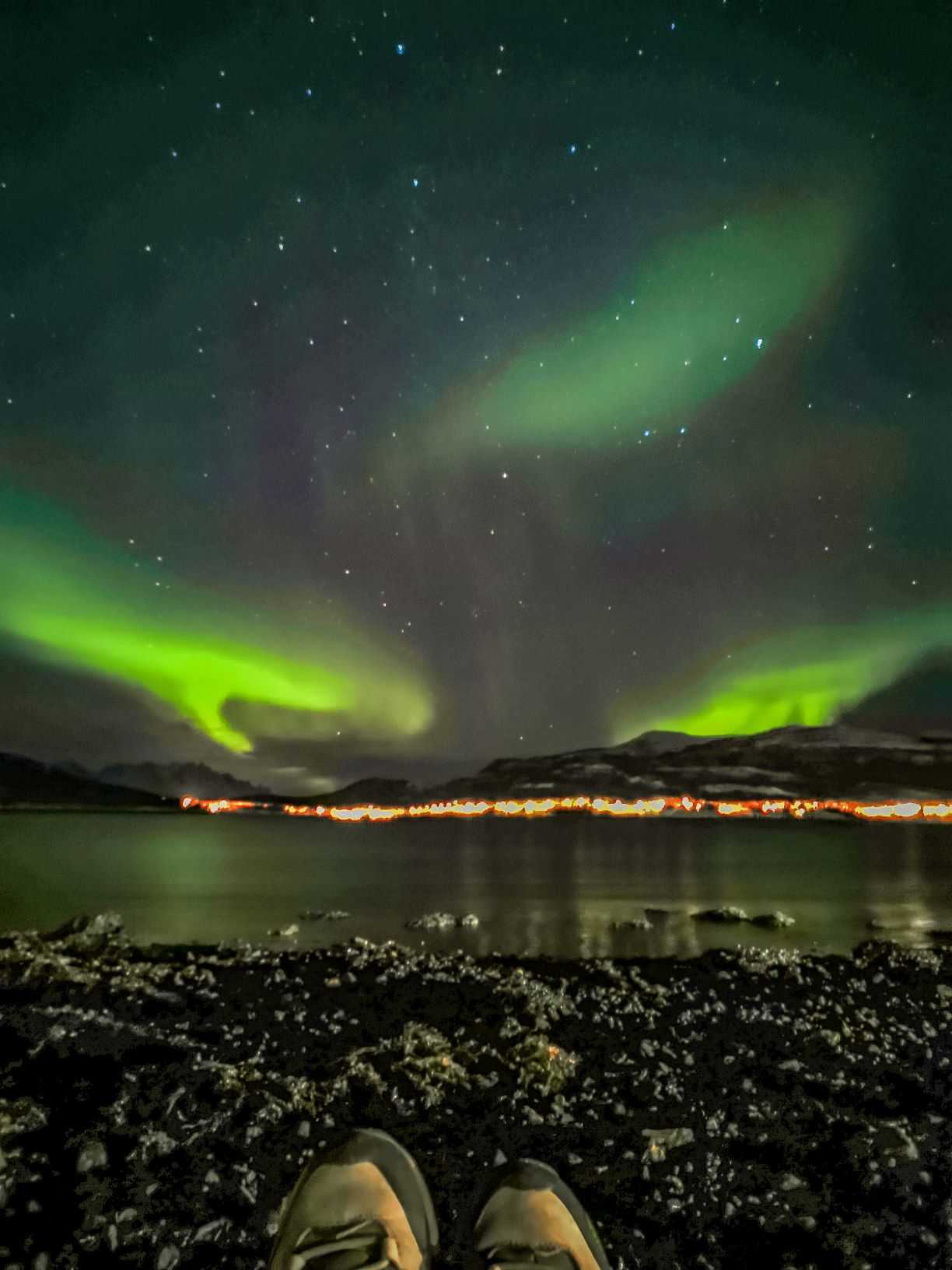
In any case, whether you’re using a mobile or a professional device, it’s important to have a high ISO value (1600), a long shutter speed (minimum of 20-30 sec), a tripod, a wide viewing angle and, of course, lots of patience.

****
Imagine a mirror;
think of looking into it;
Believe what you see.
I never thought the mirror of my dreams would ever meet reality. I am infinitely grateful to fate for being able to go beyond the Arctic Circle and have seen such natural wonders. Of course, people always tell you to dare to dream big and not be defeatist. So I wish you both a dream of at least 16 tons, and that it would eventually appear in the Norwegian Sea in the image of an orca or a humpback, which should be a matter of luck.



